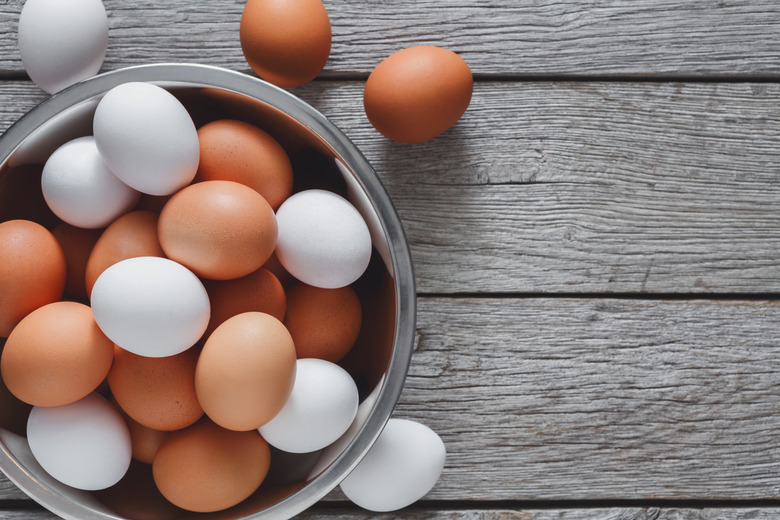Projects On The Chemistry In Everyday Life
Many household items, typical events and modern conveniences are caused by chemical reactions. There are several fun, safe and simple projects students can do to observe this chemistry in everyday life.
Breakdown of Chlorophyll by Cooking Green Vegetables
Breakdown of Chlorophyll by Cooking Green Vegetables
When broccoli, spinach or any other kind of green vegetable is being cooked, it will slowly turn a bright green and then start to fade into a less appetizing brownish green. This is because the vegetable's cells are breaking down and releasing acid that in turn denatures the chlorophyll that is responsible for the plant's bright green color. Students can determine how long it takes for the chlorophyll in a particular vegetable to be broken down by cooking it for different lengths of time and grading the resulting colors.
Checking Rotten Eggs
Checking Rotten Eggs
Eggshells are quite permeable, and after enough time, bacteria are able to invade the shell, causing the egg to start decaying. When bacteria are digesting the interior of the egg, they begin to release significant quantities of gaseous hydrogen sulfide, which builds up inside the eggshell over time. Using a carton of eggs that has gone several weeks past its "sell by" date, students can see just how much an egg has decayed by placing each egg in a jar of water and seeing how much it floats. Rotten eggs should float because of the hydrogen sulfide gas within them, and these rotten eggs can be compared to a carton of much fresher eggs, which should sink.
Making Soap
Making Soap
Soaps are made from a fat and a basic solution comprised of a metal and a hydroxide ion. To begin making soap, gently heat a mixture of fat or oil, ethyl alcohol and lye while stirring for about 10 minutes. After the mixture has been allowed to cool into a semisolid state, add hot water and then a bit of salt solution. Let the solution rest for 5 minutes, then skim curds of soap from the top of the liquid. Form the curds into a bar and start cleaning.
Softening Hard Water
Softening Hard Water
In some areas, tap water is full of minerals that make it difficult to remove soap from dishes or skin because the soap does not dissolve in the water very well. People who live in these areas often use a water softener to make cleaning dishes or taking a shower more efficient. Students can compare the two types of water by making hard water from distilled water, which does not contain any minerals. To do this, take two bottles of distilled water filled halfway and add Epsom salts to one. The use of Epsom salts, or magnesium sulfate, serves to "harden" the water of one bottle through the addition magnesium. Then add soap to each bottle. Shake both bottles to see which one has more suds. It should be the bottle containing the hard water because less soap has dissolved into the water.
Cite This Article
MLA
Smith, Brett. "Projects On The Chemistry In Everyday Life" sciencing.com, https://www.sciencing.com/projects-chemistry-everyday-life-7414089/. 5 April 2018.
APA
Smith, Brett. (2018, April 5). Projects On The Chemistry In Everyday Life. sciencing.com. Retrieved from https://www.sciencing.com/projects-chemistry-everyday-life-7414089/
Chicago
Smith, Brett. Projects On The Chemistry In Everyday Life last modified August 30, 2022. https://www.sciencing.com/projects-chemistry-everyday-life-7414089/
